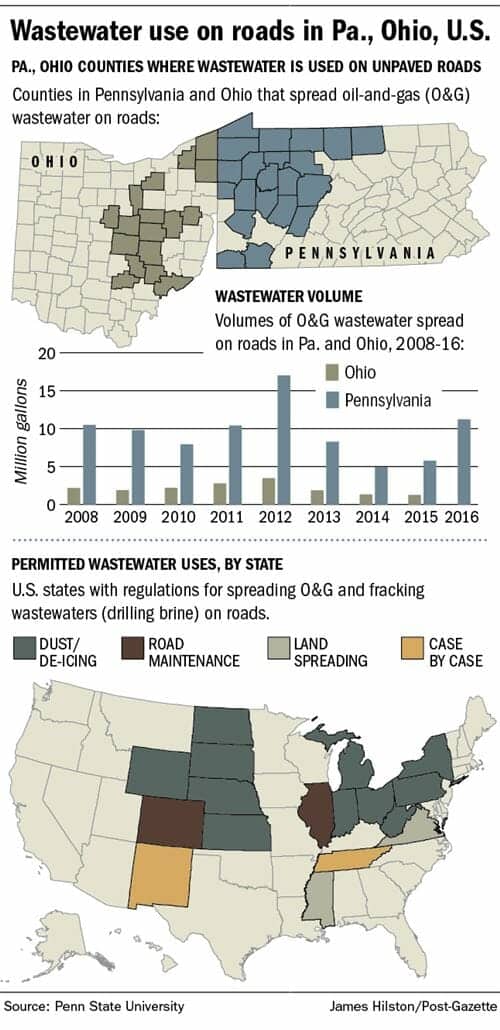Spreading wastewater from non-shale oil and gas drilling and fracking on unpaved roads is a cheap way for municipalities to suppress dust and melt snow, but a Penn State University study says the practice has potentially high costs for human health and the environment.
The study, published in the journal “Environmental Science & Technology” last month, said the wastewater contains salts, radioactivity and organic contaminants “often many times higher than drinking water standards.” The toxicity of the wastewater is a concern because rain can wash heavy metals, oils and radium, a carcinogen, from roads into nearby water sources, the study said.
“It’s true that breathing road dust is a health risk,” said William Burgos, a professor in PSU’s Department of Civil & Environmental Engineering and the study’s lead author. “But trading one environmental risk-driver for radium and hydrocarbons, well, I don’t know if that’s the best trade-off.”
Mr. Burgos said the study’s analysis of wastewater used on roads in 14 townships found median radium levels between 1,200 and 1,500 picocuries per liter. The federal Safe Drinking Water Act limits radium levels in drinking water to 5 picocuries per liter, and radium in industrial waste discharges must be less than […]
Full article: Penn State study: Spraying brine from drilling, fracking on roadways is hazardous
More about fracking waste and water:
Intensification of the water footprint of hydraulic fracturing
New study examines impacts of fracking on water supplies worldwide
Oil and gas wastewater radioactivity persists in Pennsylvania stream sediments
Pennsylvania watershed contaminated with radioactive material and endocrine-disrupting chemicals
5 Million Gallons of Freshwater Used to Frack Just One Well
Fracking Is Dangerous To Your Health — Here’s Why


